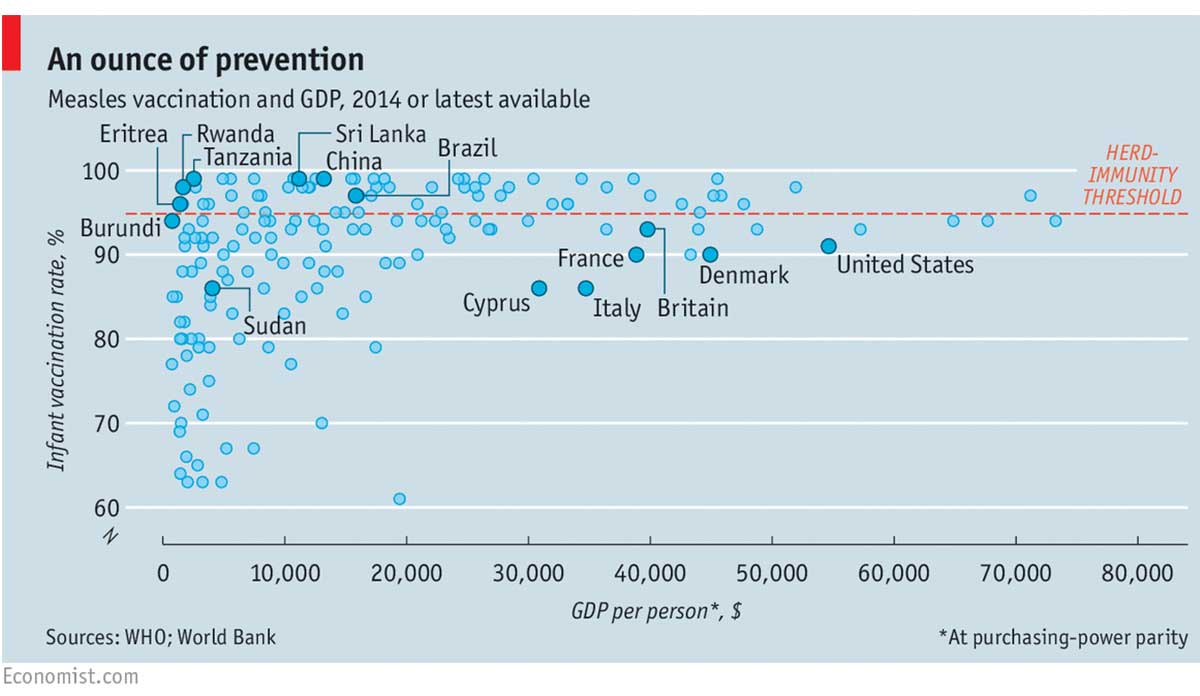Would you recognize measles if you saw someone with it? In 2017 an American might not be able to recognize the symptoms, thanks to vaccines. But a hundred years ago everyone knew the signs: high fever, cough, and the quickly spreading rash.
Measles is a viral infection that kills 400 children per day, but is easily prevented by the MMR vaccine. The vaccine, created in 1963 by microbiology hero, Dr. Maurice Hilleman, has saved countless lives. This graph published in the Economist shows that the vaccine policies of some developed countries, like the U.S., France and Denmark, have been failures.
Vaccines count on herd-immunity to be fully effective, where enough people are vaccinated such that those in the population who cannot receive the vaccination are protected. The U.S. falls well below that level. The U.S. was beat out by the likes of Burundi and Rwanda, all the while having nearly ten times the GDP per person.
Health and Human Services secretary Tom Price says that states should decide vaccine requirements. Inevitably, some states will enact strict requirements, while others may be lax. Dr. Geoffrey R. Simon, a California policy maker, relayed: “It’s clear that states with more lenient exemptions policies have lower immunization rates, and it’s these states where we have seen disease outbreaks occur as the rates slip below the threshold needed to maintain community immunity…” Non-participation will hurt chances that we break the herd immunity threshold as a nation. If we look globally, we see how much of a disaster that could be.
Databyte via A Jab in Time. The Economist.













